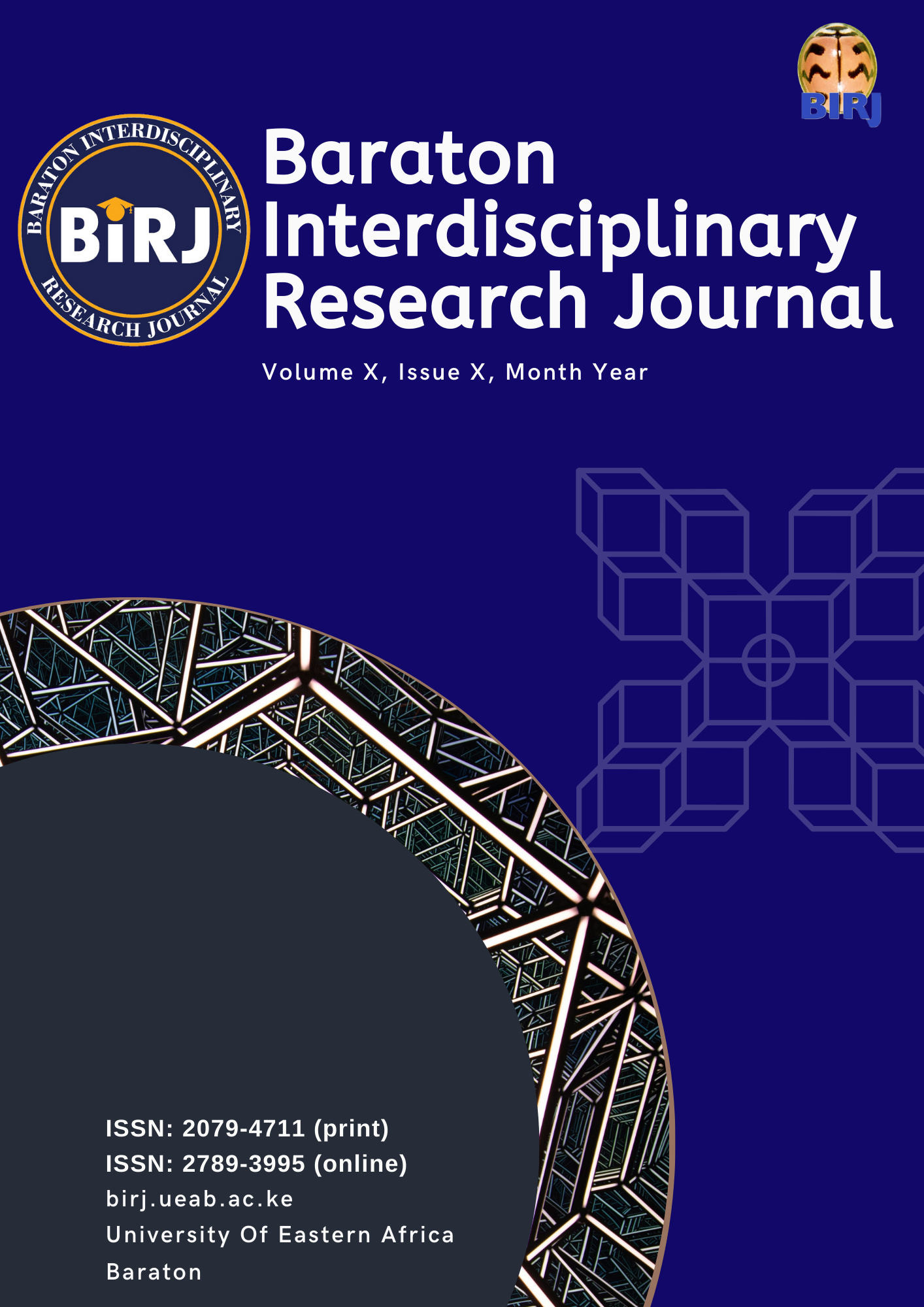ANTIMALARIAL ACTIVITY OF CROTON MACROSTACHYUS EXTRACTS AGAINST PLASMODIUM SP.
Keywords:
Croton macrostachyus, Plasmodium falciparum D6, Plasmodium berghei ANKA, parasitaemiaAbstract
The use of medicinal plants to cure parasitic infections has been practiced for time immemorial. Malaria con
trol using plant extracts can be targeted against the parasites both in vitro and in vivo or against the female
anopheline vectors. Some chemical constituents in plants with antimalarial activity include the alkaloids, ter
penes, terpenoids, epoxides, quinones and various steroidal compounds.The overall aim of this study is to iso
late and test antimalarial compounds from the extracts of C. macrostachyus in vivo. The data for this study was
obtained by an experimental case-control procedure using inbred Balb/c mice for treatment and control groups.
Mice in groups of six were infected with Plasmodium berghei (ANKA) and treated with various concentrations
of C. macrostachyus extracts, while artemether was used as positive control and Tween-80 as a negative control.
An in vivo treatment assay of C. macrostachyus against P. berghei showed percent suppression of parasitaemia
for ethyl acetate extract positive control (87.64±1.264), 500mg/kg(81.71±0.728), 250mg/kg(81.71±0.728) and
100mg/kg (61.82±0.571). The methanol extract showed percent suppression of parasitaemia for positive con
trol (97.22±0.225), 500mg/kg(68.14±0.670), 250mg/kg (33.61±0.609) and 100mg/kg (27.44±0.443). The aque
ous extract results were for positive control as 99.20±0.156, 500mg/kg, 71.85±0.447, 250mg/kg, 44.23±0.064
and 100mg/kg 24.36±0.447. The butanol extract give results for positive control as 100±0.000, 500mg/kg as
80.44±1.259, 250mg/kg as 60.66±0.445 and 100mg/kg as 72.69±0.306. Analysis of variance showed significant
differences in the suppression of parasitaemia p(<0.001).
The study showed that it is possible to control the growth of parasites by various extracts of C. macrostachyus
in vivo in Balb/c mice. C. macrostachyus extracts can be further studied and purified for possible incorporation
into antimalarial drug production.
Downloads
Published
Issue
Section
License
License Terms
All articles published in the Baraton Interdisciplinary Research Journal (BIRJ) are licensed under a Creative Commons Attribution-NonCommercial-ShareAlike 4.0 International License (CC BY-NC-SA 4.0).
This license permits users to share (copy and redistribute) and adapt (remix, transform, build upon) the material for non-commercial purposes, provided that proper attribution is given to the original authors, a link to the license is included, and any derivative works are distributed under the same license.
Full license details: https://creativecommons.org/licenses/by-nc-sa/4.0/

